Adventures with Gaelic Flavor on Scotland’s Hebrides Islands
- February 1, 2022
- 8 Min Read
Scotland‘s Hebrides Islands are an archaeological wonder, teeming with wildlife, rough natural beauty and plenty of whisky for the adults. Adventurous families looking to forge their own holiday path will be delighted by the unspoiled landscapes and memorable outdoor adventures to be had in this vast array of islands off the west coast of Scotland.
With so many islands to choose from, we suggest a weeklong itinerary that includes four days in the Outer Hebrides, primarily the Isle of Lewis and Isle of Harris, and three days in the Inner Hebrides.
The Inner Hebrides, an island chain closer to mainland Scotland, are quite spread out north to south, allowing a “choose your own adventure” scenario based on interests. Families might spend a few days on the Isle of Skye, connected by bridge to the mainland and home to crystal blue fairy pools and waterfalls, unique outdoor activities and distilleries. You could explore Mull, known for its wildlife and popular with history buffs, with plenty of nearby smaller (and car-free!) islands for day trips. Or check out the lesser-known islands of Islay, for pony trekking and whisky; and Jura, untamed and sparsely populated.
An ideal itinerary will give families a taste of several islands while keeping the number of hops to a minimum, as travel between islands via ferry can be time-consuming and tiring with kids.
Families will be best served by land travel — rent a car and use the CalMac ferry to get from island to island. There are some small-ship cruising options for the Hebrides, but they largely cater to an older audience.
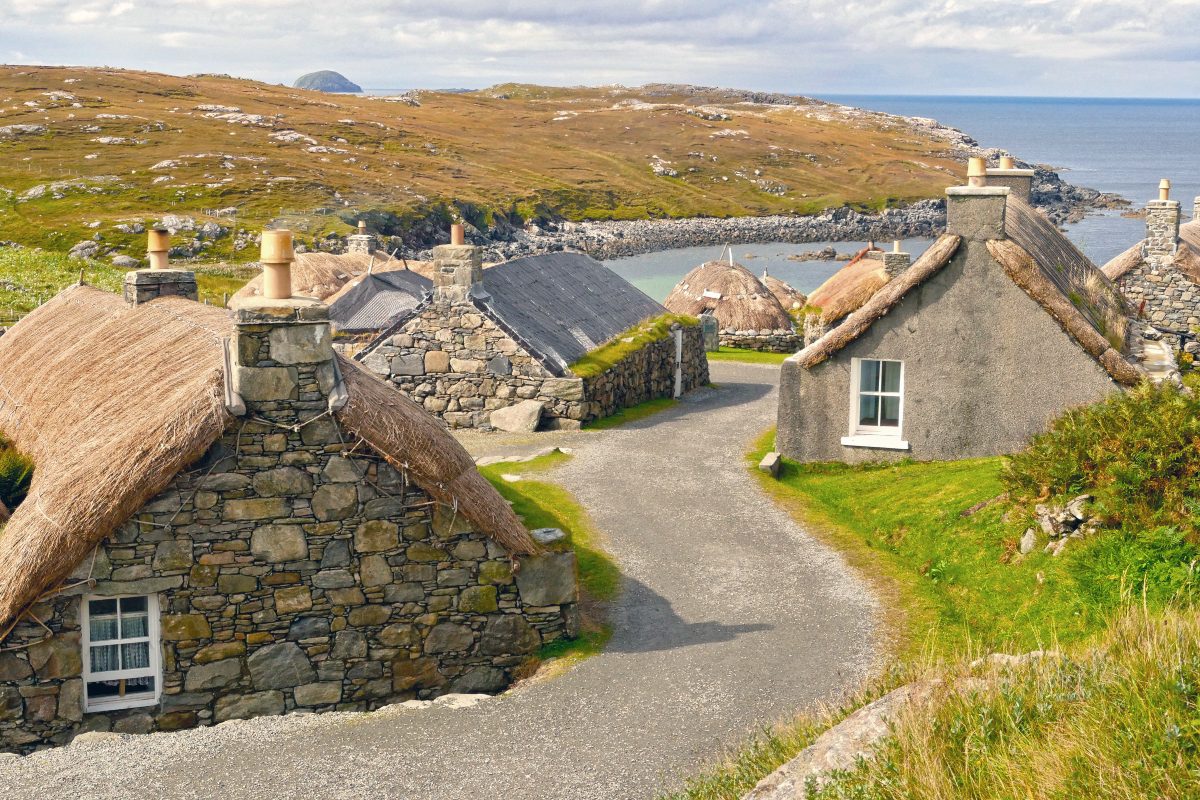
Exploring the Hebrides Islands with Kids
Outer Hebrides
Start your trip in the Outer Hebrides, a group of connected Atlantic islands and one of the first places to be settled in the British Isles, circa 8500 BC. The Outer Hebrides hold steadfast to Gaelic, which is their first language, and Celtic culture is proudly on display throughout the region.
We recommend beginning in Lewis, with its ready airport access from Edinburgh, Glasgow, Inverness and other points around the U.K. Lewis has a slew of interesting archaeological sites, including the 5,000 year old Callanish Stones (Calanais in Gaelic). Though their origin remains a mystery, this Neolithic circle of standing stones is thought to have been used for rituals during the Bronze Age. Nearby Gearrannan Blackhouse Village is a cluster of stone cottages that enables kids to picture life in the 19th century. For families truly looking to immerse themselves in the period, it is also possible to stay the night there.
Family accommodations on Lewis range from historic hotels like the Royal Hotel in Stornoway to croft B&Bs — a chance to learn about crofting, a unique Scottish approach to small-scale farming.
Ready to start planning a fabulous Scotland vacation with kids?
We can help! Our Family Travel Advisors work with you one on one to choose where to go, book vetted accommodations, create a custom itinerary, arrange private tours and guides, and more. Click to get started!
A quirky photo stop in Bragar at the north end of the island is the Whale Bone Arch. The local postman created this 25-foot tall sculpture from the jawbone of an 80-foot blue whale that was beached in Bragar Bay in 1920 and it still stands there today.
Harry Potter fans will want to seek out Lews Castle to see the Lewis Chessmen, Norse chess pieces discovered in 1831 in the sands of Uig bay, which inspired the giant versions in the film Harry Potter and the Sorcerer’s Stone. Six of the original 78 pieces carved from ivory and whale teeth are on display in the Lews Castle Museum.
Outdoor pursuits abound in Lewis, including canoeing, hillwalking and windsurfing. Families can also try their hand at geocaching, a mix between orienteering and treasure hunting that uses GPS. There are caches all around the Hebridean Islands, but a good concentration in Lewis. At the northern tip of Lewis is Eoropie Beach, a haven for surfers as well home to outdoor play center Eoropie Dunes Park, with everything from a zipwire to adventure trails, a maze and a traditional playground.
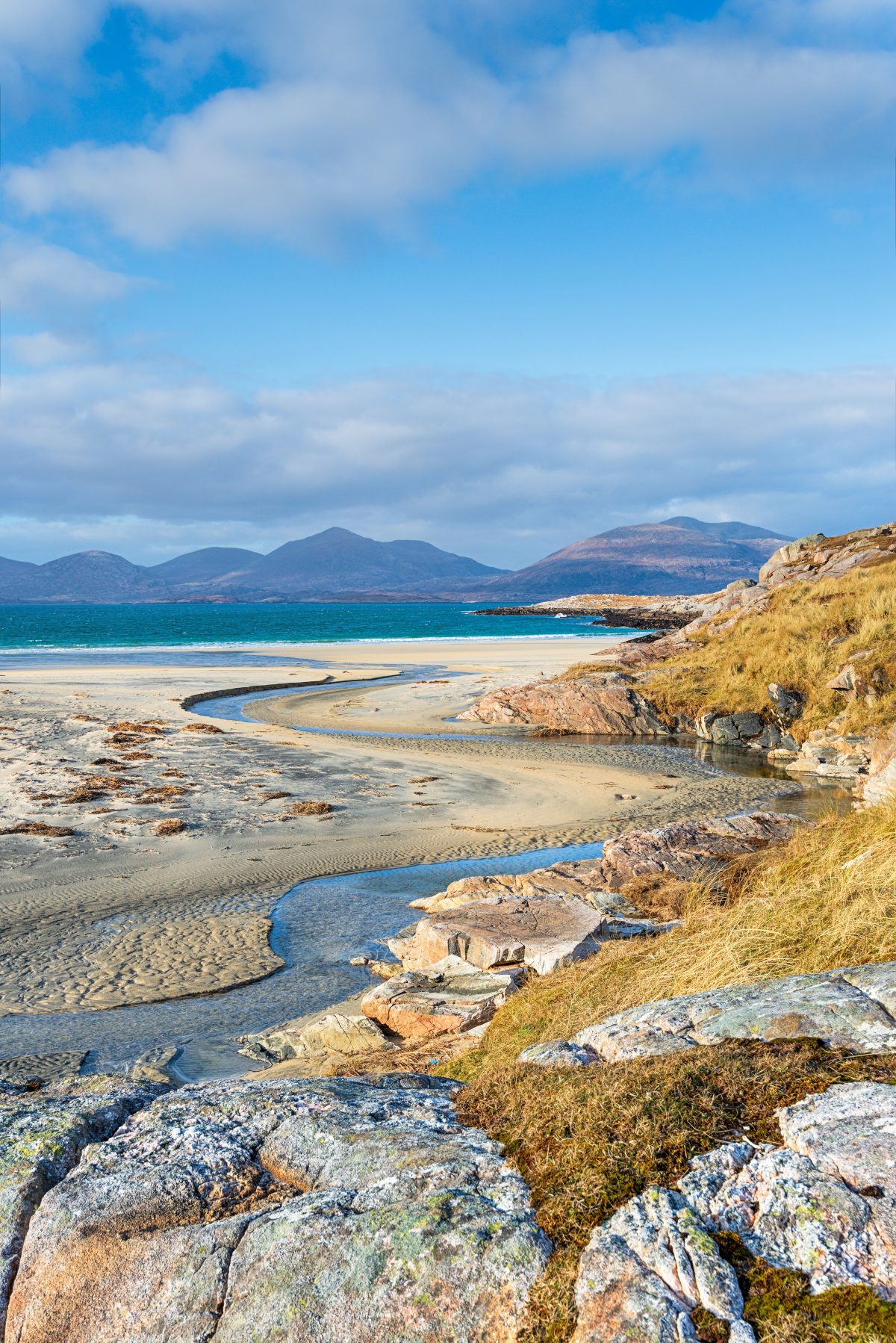
After Lewis, it is on to the Isle of Harris (the two are technically one land mass, but considered separate). Harris is world-famous for its tweed fabric, and families can tour one of the three remaining mills to learn about its heritage and the tweed-making process, from dying the wool to weaving.
Wildlife is a huge draw for families in and around Harris; there are many opportunities from both land and sea for sighting birds, red deer, minke whales, dolphins and seals. Beaches are another main attraction, and popular spots include Horgabost, Nisabost, Luskentyre and Scarista. Sea kayaking from Luskentyre Beach, with its clear turquoise waters, is a first-rate option, as it is considered one of the prettiest beaches in Scotland. Intrepid families will be wowed by another beach pursuit in Harris: blo-karting (think wind-powered go-karts).
For a day out on a smaller scale, try the tiny Isle of Scalapay, connected to Harris by bridge. Explore the tiny town of Hennavy and see the red and white Eilean Glas lighthouse.
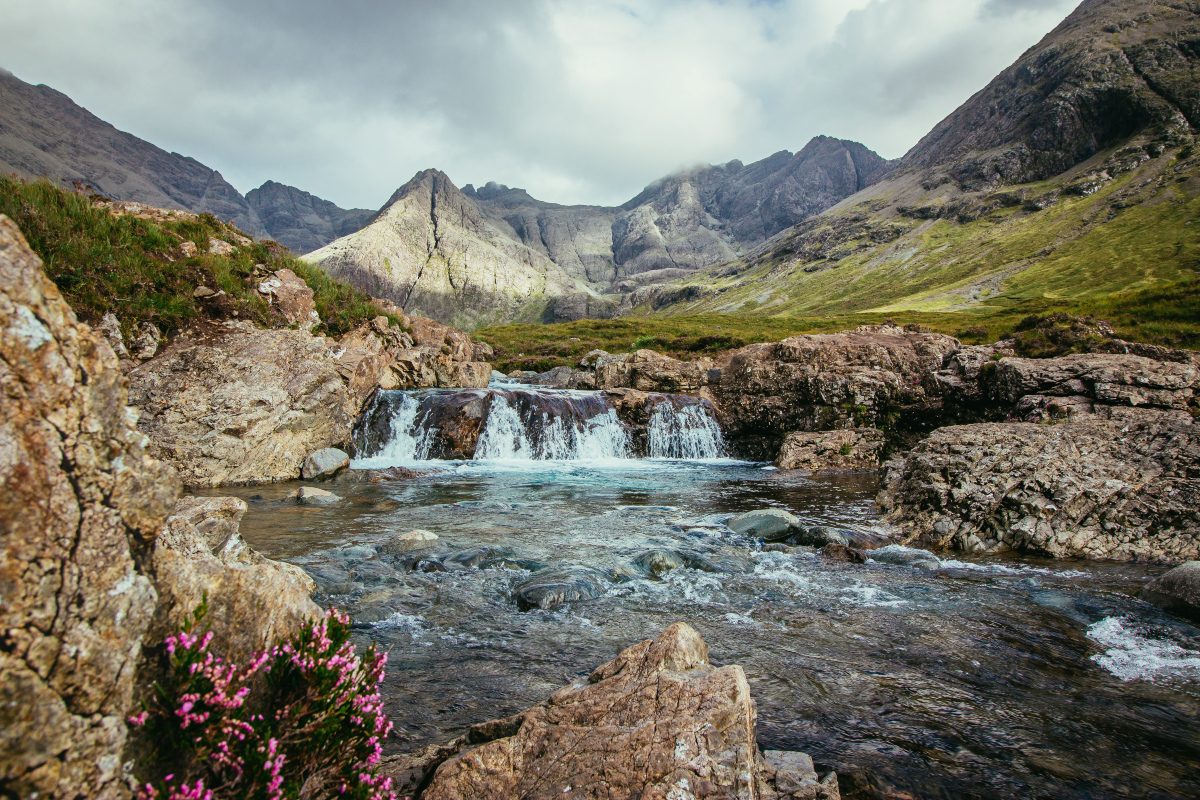
Inner Hebrides
Next up is a shift to the Inner Hebrides, a chain of 35 inhabited and 44 uninhabited islands that hug the west coast of the Scottish mainland. Pick one or more of these focal points, depending upon your time and interests:
Skye
The Isle of Skye is connected by bridge to the mainland, making it super accessible. Families can hike past waterfalls to the picturesque Fairy Pools, which are only a 20-minute walk from the village of Glenbrittle. These stunning pools, stepping-stones and waterfalls were created by the River Brittle as it flows down from Black Cullin mountain range. Note: The water can be quite cold and wet suits are recommended if you plan to fully take a dunk. Cliff-jumping here is also quite popular, but this activity is best navigated by older kids and teens.
Older thrill seekers will also want to try their hand at coasteering, a relatively new adventure that involves traversing the coast by swimming, scrambling, climbing, jumping and using teamwork to cross obstacles with ropes. A slightly calmer pursuit is a boat ride around Rasaay to view the flat-top summit and local wildlife.
Don’t forget a family hike to Quiraing to see the breathtaking cliffs and plateaus of this unusual stone outlook, created by the partially collapsed Trotternish Ridge. Adults will also want to check a visit to Talisker Distillery off the list.
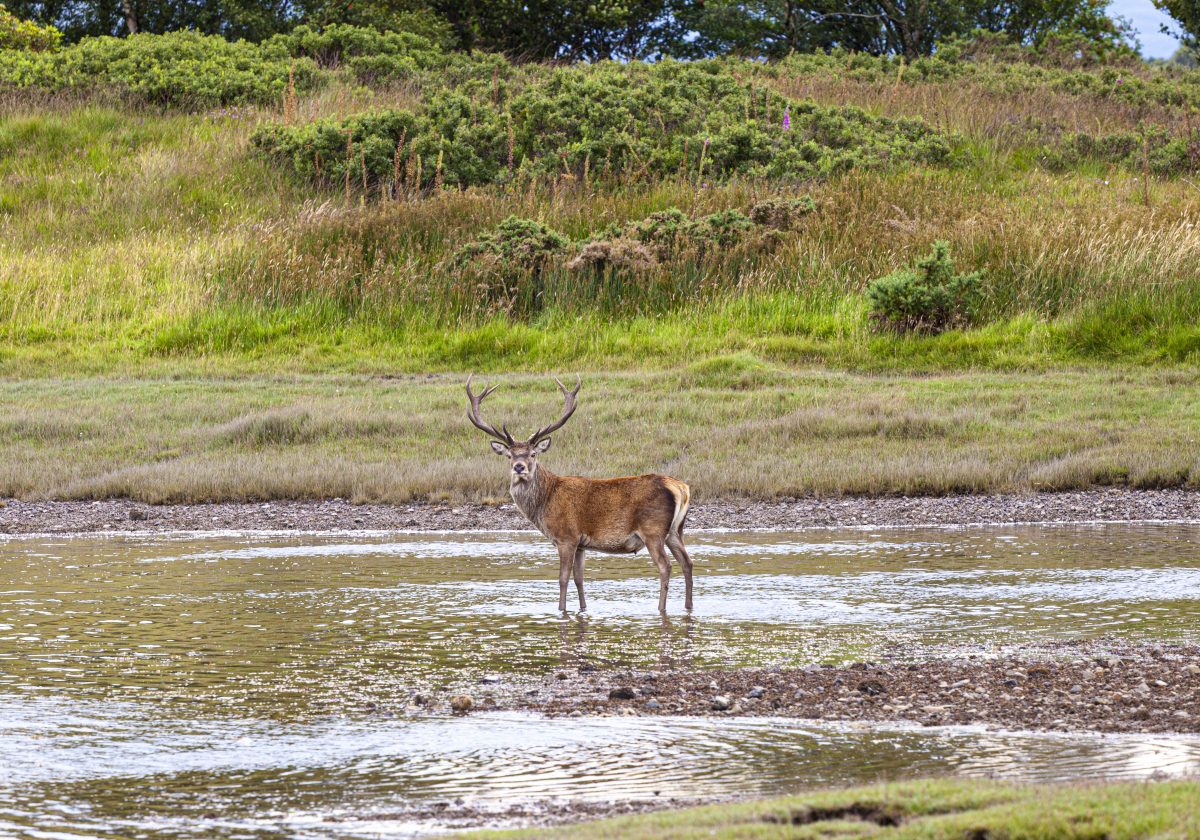
Mull
Mull is celebrated for its wildlife, including puffins, otters, dolphins and whales, as well as its extensive history. The main town on Mull is Tobermory, with its colorful harborfront buildings, and it makes a good home base. There are plenty of captivating ways to explore the island, from wildlife tours to quests or e-bikes. Must-see spots include 800-year-old Duart Castle and Calgary Beach.
The volcanic island Staffa is an easy day trip from Mull. Staffa boasts plenty of wildlife and is also home to Fingal’s cave, a spectacular sea cave formed by hexagonal columns of basalt stone. Staffa has drawn many famous visitors over time, including Queen Victoria, Jules Verne and composer Felix Mendelssohn, who was so moved by Fingal’s cave that he wrote “Hebrides Overture.”
Bird lovers should be sure to visit Lunga, an uninhabited and protected island famous for its puffin colony. These small black and white sea birds with bright orange beaks nest on the hills here until August each year.
Browse our favorite destinations around the world for nature and wildlife trips with kids.
Nature and wildlife-focused trips can include things as simple as appreciating the natural beauty of a mountain peak on a hike, or as spectacular as breakfast with giraffes in Africa. Read about our top destinations, then contact us to help plan an unforgettable family escape.
History buffs will be eager for a pilgrimage to Iona, known as the Sacred Isle, where St. Columbus landed and brought Christianity to Scotland. It is also home to St. Oran’s Chapel, whose cemetery is the final resting place of early Scottish kings — think Macbeth!
Budding astronomers will be intrigued by Coll, one of two “dark sky” islands in the world. The island has made great efforts to limit light pollution and the stargazing in this car-free locale is spectacular.
Islay and Jura
Lesser-known Islay and Jura are worth a visit for families hankering to commune with nature and soak in the peace and solitude. Kids will enjoy pony trekking on Islay to view its dramatic scenery and bird life; the adults will be keen to visit a few of the distilleries, including Laphroaig, which has a museum and offers tours and tastings. From there it’s on to Jura, where George Orwell wrote 1984. Jura is quite untamed and is known for being home to more red deer than people.
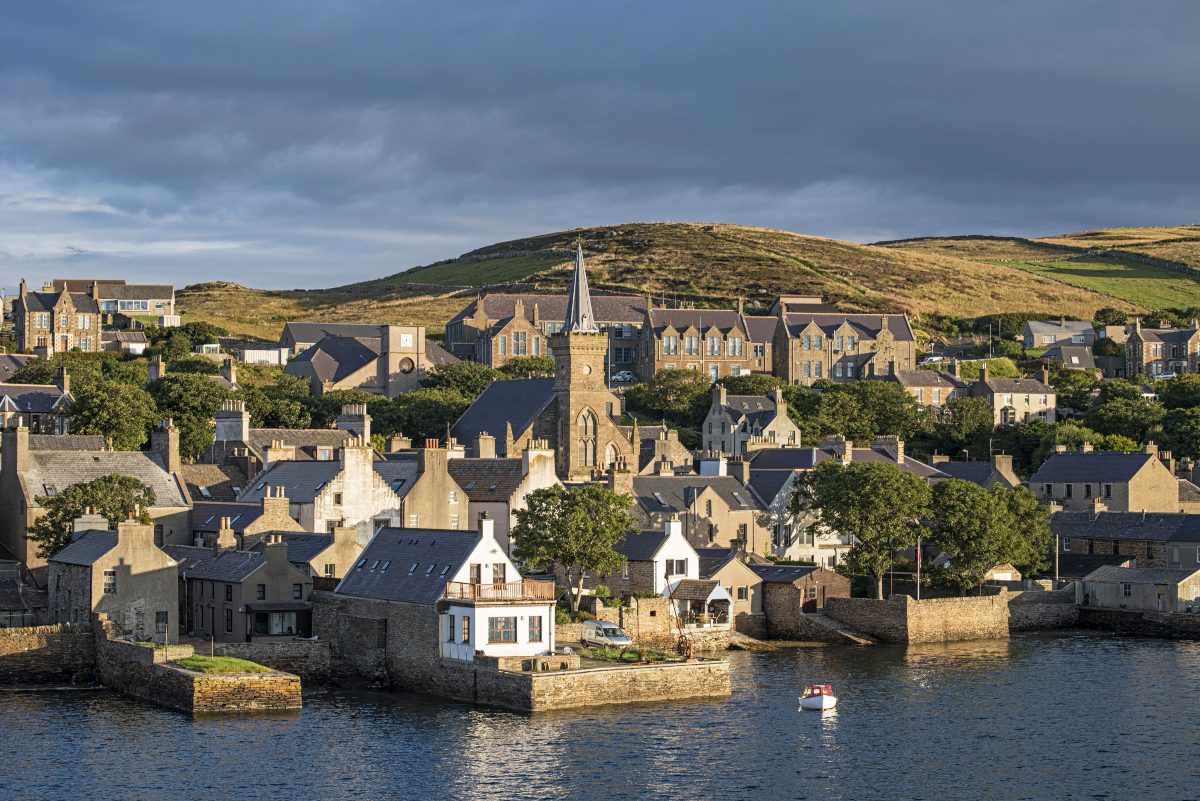
Add a Stay in Orkney
For a distinctly different set of braw (Scottish slang for pleasant) adventures, consider adding a few days for a visit to Orkney, north of the mainland. This enchanting archipelago is brimming with Neolithic treasures, craggy rocks, dramatic seascapes and miles of sandy beaches.
Orkney boasts seven UNESCO World Heritage Sites that will delight even the most jaded visitors. The most famous is Skara Brae, a flagstone village older than Stonehenge and the Great Pyramids. It has been so well preserved that it is called the “Scottish Pompeii.” Three other nearby sites — Maeshowe, a huge, chambered tomb that was crafted to align with the setting of the winter sun as well as two magical stone circles; the Ring of Brodgar; and the Standing Stones of Stenness — make up the heart of Neolithic Orkney.
Budding paleontologists will be interested in a visit to the Orkney Fossil and Heritage Centre, but families will be surprised and captivated to learn about the history of the Churchill barriers in the Scapa Flow waters and how they played a strategic part in Britain’s World War II naval strategy.
At Barony Mill, Orkney’s only operating water mill, kids can watch the miller grind bere, an ancient form of barley. Children are also made to feel welcome at the Orkney Brewery, with tasty food for everyone and the chance for the adults to sample a variety of handcrafted ales.
An unexpected spot of note on Orkney is the tiny Italian Church, which was created by Italian POWs during their time here.
Make sure to leave plenty of time for relaxing and enjoying Orkney’s many rugged beaches. Local favorites include Rackwick Bay in Hoy, Sanday’s Tresness and Westray’s Grobust.
Families Should Know
The best months to visit the Hebrides Islands and Orkney are June, July, August and September. The weather can still be quite unpredictable in summertime, so pack for potential rain or cold temperatures. Layers are best!
Another timing consideration for this trip is a chance to see the Northern Lights. Based on the islands’ latitude and low light pollution, families have a good chance of glimpsing the the aurora borealis (locally known as the “Mirrie Dancers”), especially in Harris, Lewis, Skye and Orkney. Prime viewing is in the transition from summer to fall or during the winter.
Relevant Links:
Browse all family-friendly destinations and accommodations in Scotland on Ciao Bambino
72 hours in Edinburgh with kids: Things to do for the whole family
Best things to do in Glasgow with kids
Best places to visit in Europe: 7 family-friendly hidden gems
Editor’s note: This post was accurate when published. We advise checking independently for the latest information and updates. Ciao Bambino does not accept responsibility or liability for any errors or omissions in, or for any actions taken based on, the information presented.
Family Travel Blog
View All Posts





 travel recommendations, inspiring adventures, and exclusive travel offers
travel recommendations, inspiring adventures, and exclusive travel offers